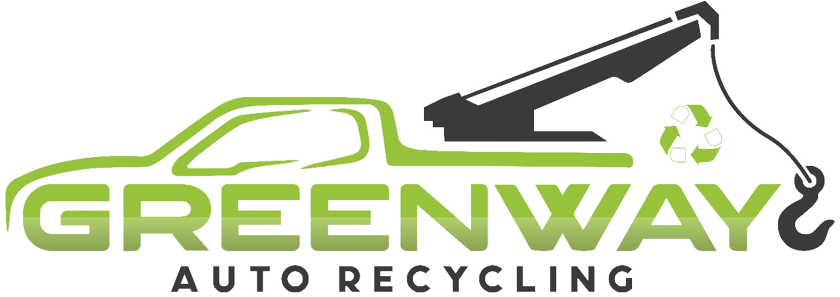Introduction
The price of a scrap car in Northern Ontario often surprises many owners. People expect to get the same payout that their friends or family receive in bigger cities. Yet, real rates in Northern Ontario tend to be higher at the yard level and lower at the seller level simultaneously. This happens because scrap yards face a long and costly process to move old cars from scattered towns to large metal buyers.
Northern routes involve long drives, higher fuel use, fewer load options, and limited access to major metal processors. All these factors raise the cost that scrap yards must handle before they even begin recycling the metal. Once you understand how this chain works, the price difference becomes easier to understand. Keep reading because the full picture matters a lot if you want fair value for your old car.
How Geography Shapes Scrap Car Rates in Northern Ontario
Northern Ontario covers a wide area with long stretches between towns. Recycling trucks must travel these routes for nearly every pickup. Scrap yards also move bulk loads to bigger markets in the south. They cannot avoid this travel. Most metal buyers operate near cities like Toronto, Hamilton, or other southern hubs. These hubs feature large mills that can process substantial quantities of steel. Yards in the north depend on them for the final sale.
This long distance creates a simple problem. Every kilometre adds to fuel use. The truck stays on the road for more hours. Drivers spend more time per load. This means the handling cost of each scrap car rises before any metal is even sold. Yards must adjust their payout, which is why sellers often get a lower amount compared to southern Ontario.
Why Transportation Costs Go Up in the North?
Fuel usage is the biggest factor. Heavy tow trucks pull more fuel than normal vehicles. When they travel across long routes, the cost jumps. Roads in the north also have fewer rest points. Drivers cannot combine multiple pickups in a small area. The distance between one pickup and the next could be more than what a southern yard covers in a whole day. This reduces overall efficiency.
Weather adds another layer. Northern Ontario faces long winters. Snow, ice, and slow travel increase fuel use again. Trucks cannot always carry full loads. Sometimes they return with partial loads because poor road conditions slow down schedules. When yards face repeated delays, the cost spreads across all the scrap cars they handle.
Many yards also pay higher maintenance bills for their trucks because rough roads wear out parts faster. These small pieces stack up into a large running cost. All these reasons make transportation one of the biggest factors behind scrap pricing in the north.
Limited Scrap Yards and Longer Pickup Times
Northern Ontario has far fewer licensed scrap yards compared to southern Ontario. When the number of yards is low, each one must cover a larger service area. This stretches operations across hundreds of kilometres. When a yard receives a pickup request, it must plan a route that covers many towns. These routes take much longer to complete, increasing labour hours.
This also limits the number of full loads they can build in a week. A yard in Toronto may pick up enough scrap cars to send two or three full loads to a mill in the same week. A yard in the north may take much longer to build, even one load. Fewer loads mean a higher cost per load. These costs affect the rate that sellers receive.
How Processing Delays and Supply Flow Affect Scrap Prices?
Scrap metal needs basic processing before it reaches the mills. Many smaller northern yards do not have heavy processing machines. They depend on bigger partners in the south. When a yard needs to move crushed or stripped cars south, they must send trucks on long hauls. These hauls cost more and take more time. When mills slow down buying due to market shifts, northern yards end up facing long waiting times. They cannot store metal for long periods because space is limited. This slows cash flow. When cash flow slows, payout to sellers also slows.
When the price of steel on the global market rises, southern yards can react fast. Northern yards react more slowly because they need to move metal south before they get the benefit of high prices. When markets fall, the gap becomes more painful because travel costs stay the same even though metal value drops.
This long chain reduces profit margins, and when margins shrink, payouts for scrap cars naturally drop. The cause is not the metal itself but the cost of getting that metal to the buyer.
Also Read: How Metal Prices Influence A Scrap Car Value
Why Sellers Pay More for the Same Car in the North?
A car that sits in Sault Ste. Marie or Thunder Bay may look no different from a car in Mississauga. Yet the cost to handle it is higher. Heavy trucks cannot avoid the fuel, road, and labour costs of travel. Even paperwork and compliance checks sometimes take longer in remote towns because yards must coordinate with fewer local partners.
If a car is old, stuck, or needs extra loading equipment, the handling and travel costs rise again. The yard must bring more tools or send a bigger truck. These extra steps add to the overall operating cost. So even if the metal inside the car has the same value in the market, the cost to reach that value is higher in the north.
What does this mean for Scrap Car Owners in Northern Ontario?
Many owners assume yards are paying less without any valid reason. But once you understand the full chain, it becomes clear that the price difference is not unfair. It is the result of long routes, weather challenges, and high travel costs. If you want a better price, you can still take steps.
You can call yards during seasons when roads are clear. You can also keep the car in an easy-to-reach spot. If you wait too long and the car sinks into snow or mud, loading takes more work. This raises costs. It helps to share clear details like the car’s condition, missing parts, or distance from the road. This helps the yard plan a smoother pickup and keep costs in control.
You can also look for yards that offer free towing. Some yards may include this in their service because they already have a route planned in your area. Many sellers also search for local keywords like scrap car removal before booking. This helps you find local yards that understand northern routes well and can offer more stable prices.
Conclusion
Scrap car prices in Northern Ontario are shaped by long travel routes, high fuel use, fewer yards, and slower access to large metal buyers. These realities raise operating costs for scrap yards and influence the payouts that sellers receive. Once owners understand this full chain, expectations become clearer and decision-making becomes easier.
For a smooth and fair experience, you can reach out to Greenway Auto Recycling—they provide clear guidance and steady support for all scrap-related needs across Ontario.





